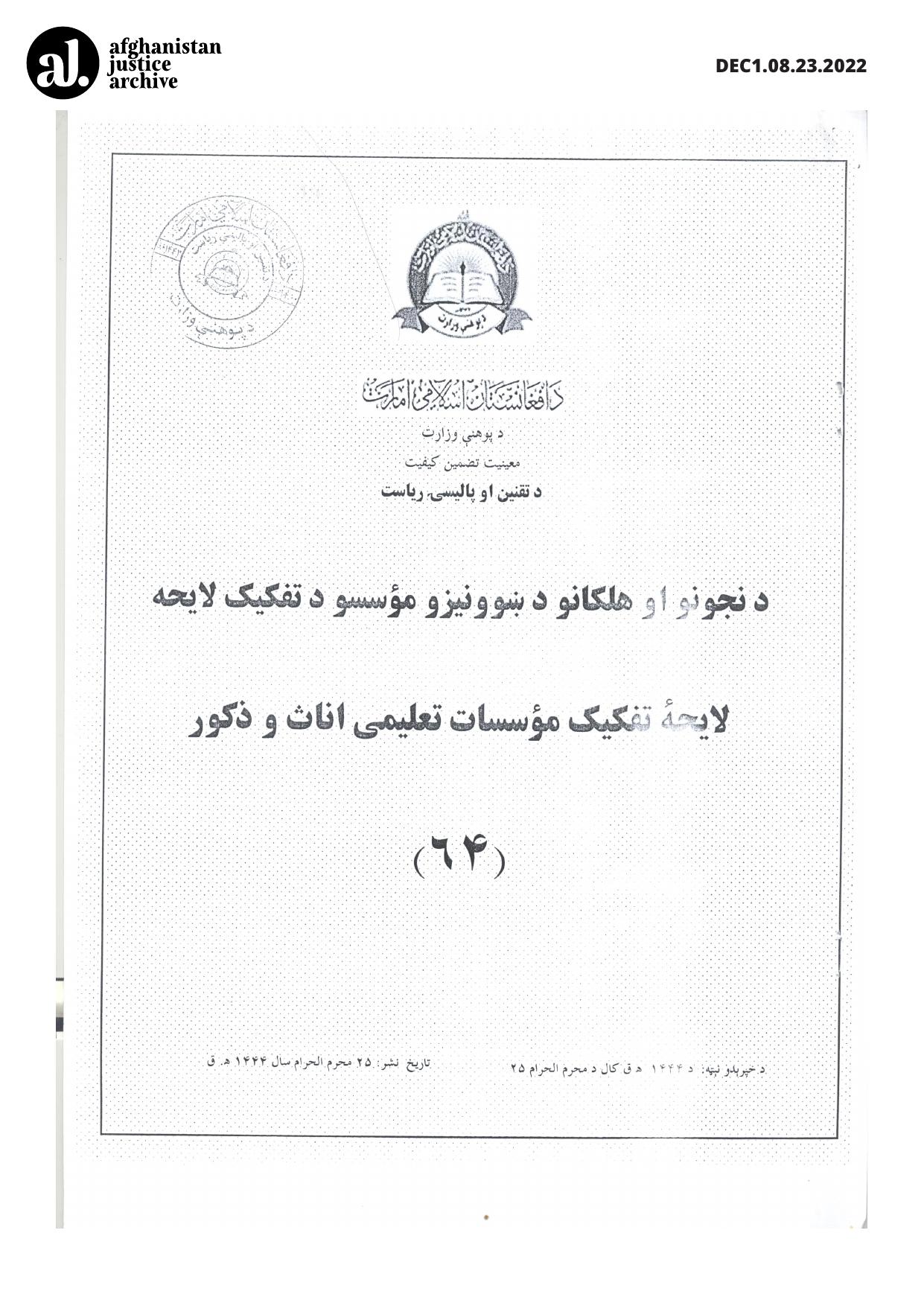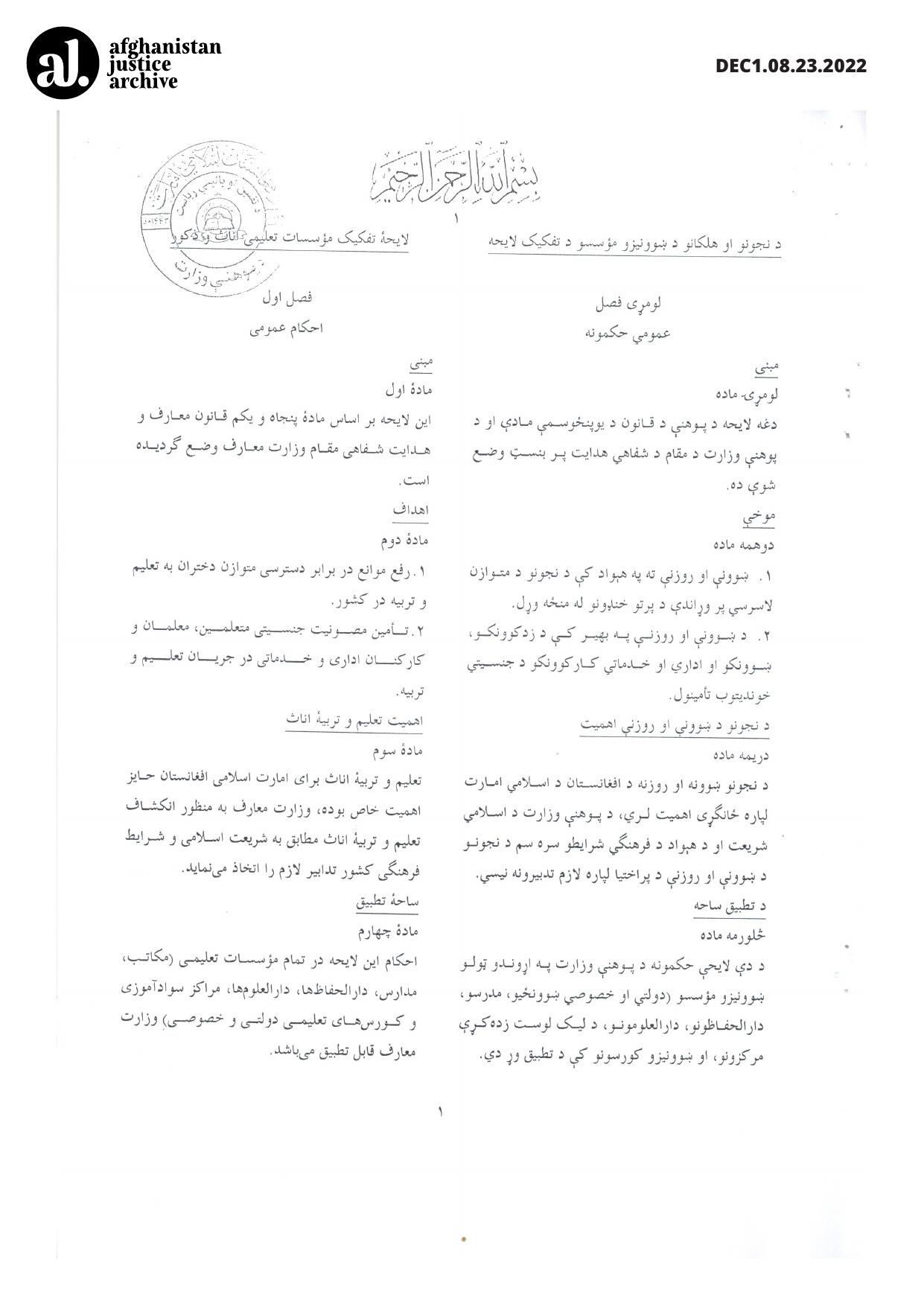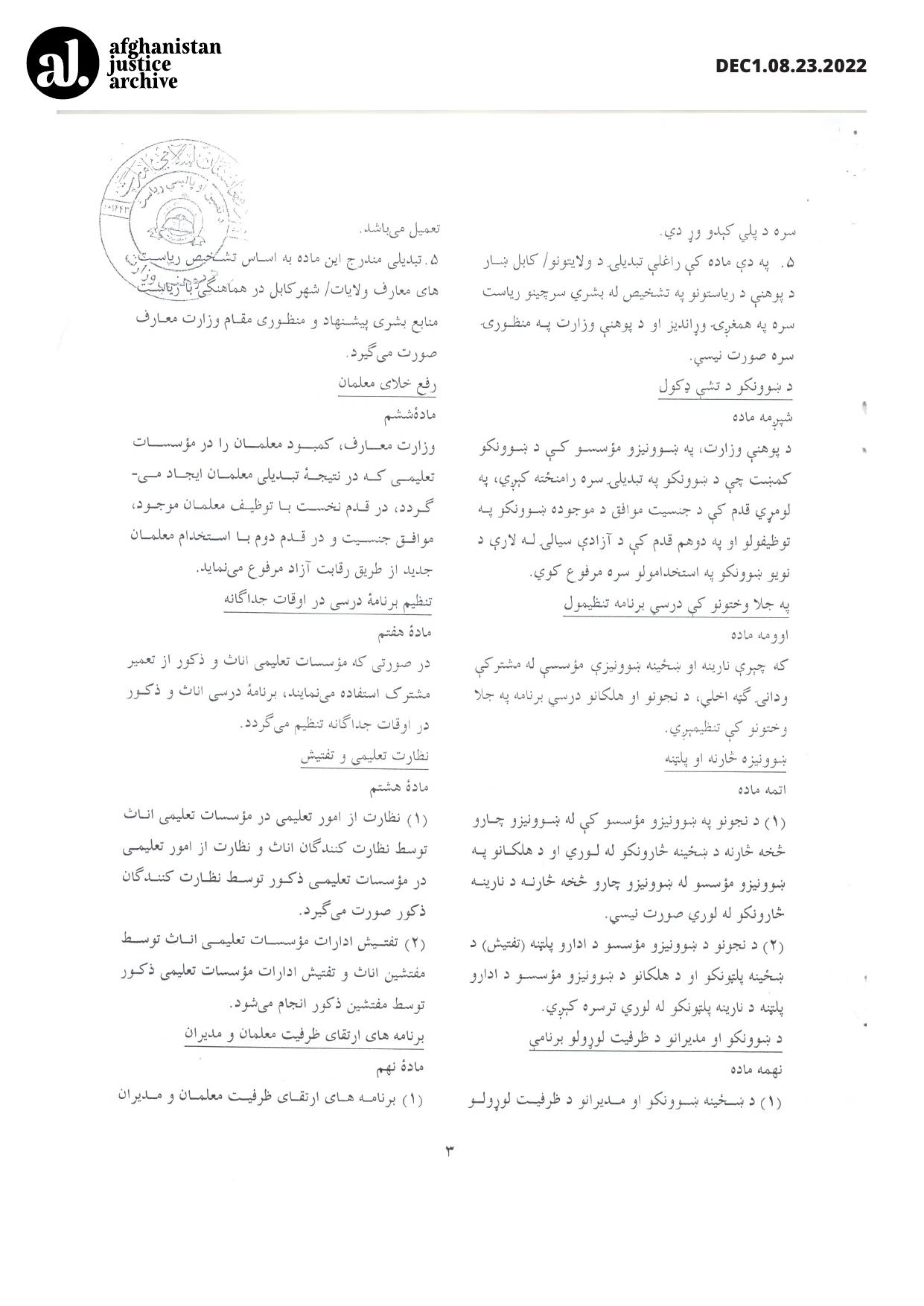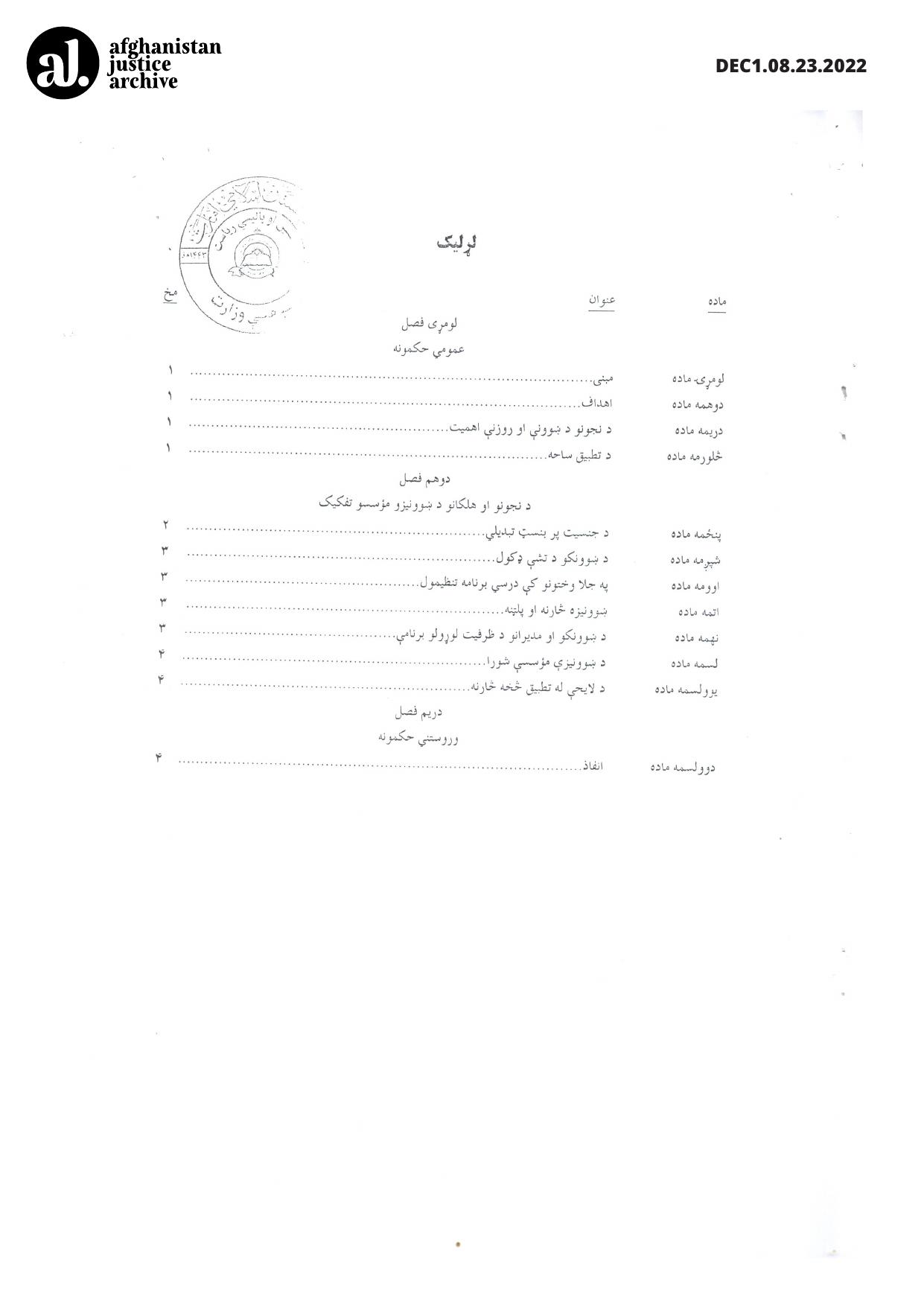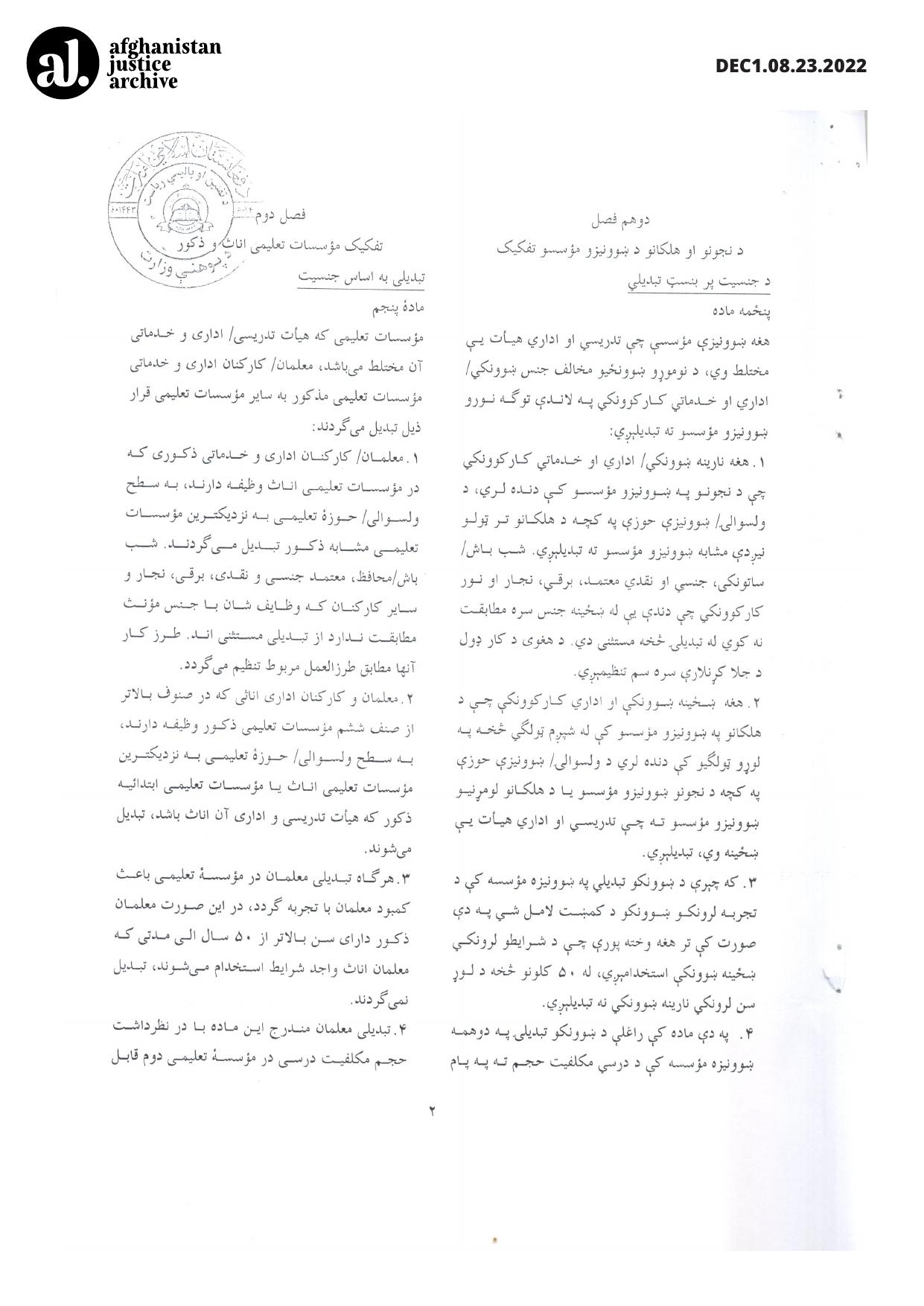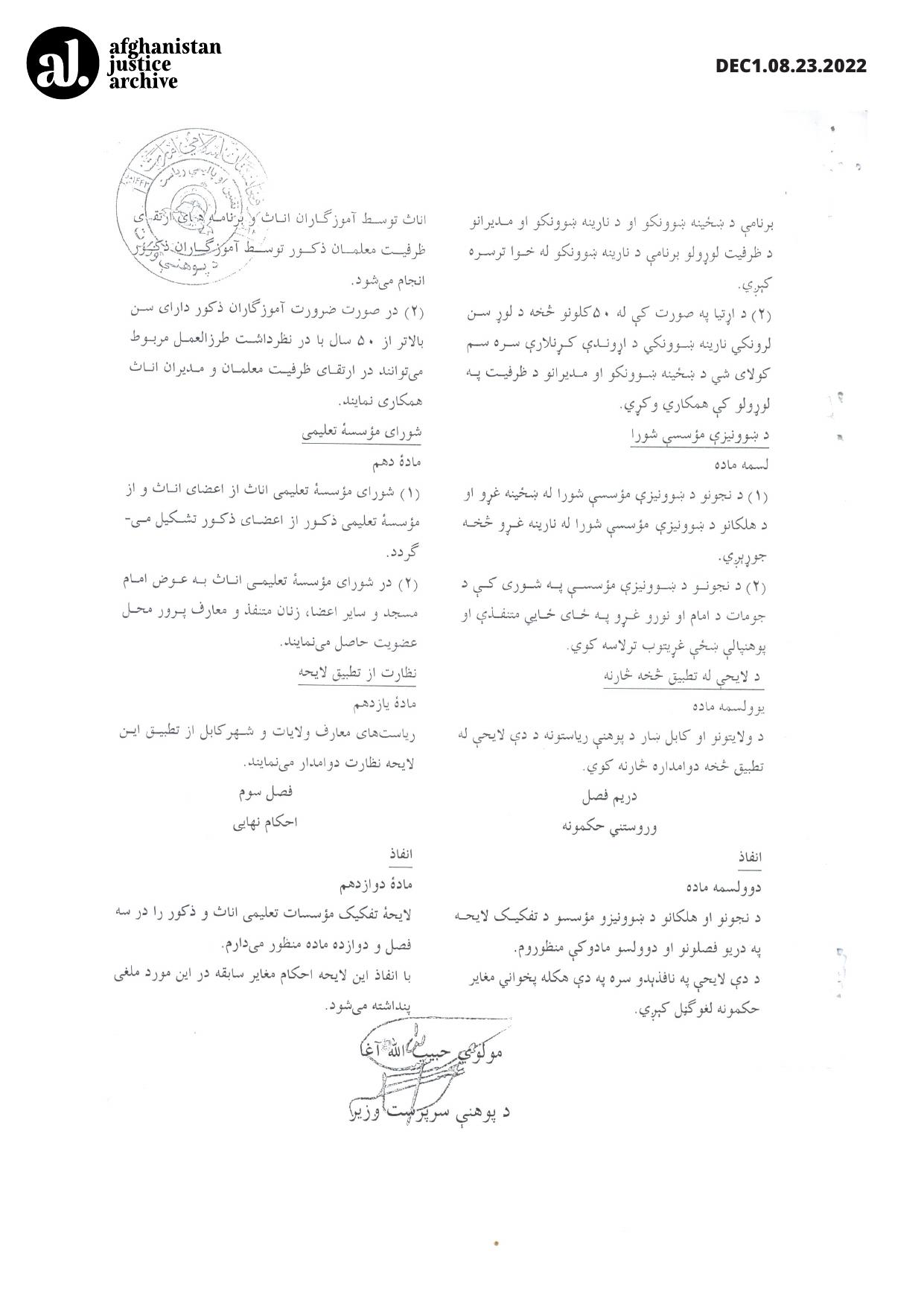Decree
Decree Translation
Date: 25/01/1444 Ministry of Education of the Islamic Emirate of Afghanistan, 1444 AH (2022 AD)
To Whom It May Concern:
Subject: Approval and Publication of the Draft on the Separation of Male and Female Educational Institutions. The Ministry of Education of the Islamic Emirate of Afghanistan, in the year 1444 AH (2022 AD), presents for your review and implementation the following draft, which has been prepared by the Policy and Legislation Department of the Ministry.
The draft, consisting of three chapters and twelve articles, has been officially approved and signed by Mawlawi Habibullah Agha, the Acting Minister of Education. The details of the draft are outlined below: Draft for the Separation of Male and Female Educational Institutions –
Chapter One: General Provisions,
Basis Article 1: This draft has been formulated based on Article 51 of the Education Law and the verbal directive issued by the Minister of Education.
Objectives
Article 2: 1. To eliminate any barriers preventing girls from accessing education within the country. 2. To ensure sexual safety and protection of students, teachers, and administrative and service staff throughout the educational process.
Importance of Female Education
Article 3: The education of females holds particular importance for the Islamic Emirate of Afghanistan, and the Ministry of Education will take all necessary steps to develop female education in accordance with Islamic law and the cultural norms of the country.
Scope of Implementation
Article 4: The provisions outlined in this draft shall apply to all educational institutions, including schools, madrasas, memorization centers, religious institutions, literacy centers, and both public and private educational courses, all of which fall under the Ministry of Education.
Chapter Two: Separation of Male and Female Educational Institutions
Article 5: In educational institutions where the teaching and administrative staff are mixed, the following measures will be implemented: Male teachers and administrative staff working in female institutions shall be reassigned to the nearest male educational institution at the district or educational zone level. Exceptions will be made for night watchmen, guards, financial auditors, electricians, carpenters, and other staff whose duties are not aligned with the female gender. Their duties will be organized in accordance with specific guidelines. Female teachers and administrative staff working in male institutions above grade six will be reassigned to the nearest female institution or to primary male institutions where the teaching and administrative staff are female. 1. If the reassignment of male teachers results in a shortage of experienced educators, male teachers over the age of 50 will not be reassigned until qualified female teachers become available.
2. Teacher reassignments under this article will be carried out according to the teaching workload of the receiving institution.
3. Teacher reassignments will be proposed by the Education Departments of provinces or Kabul city, in coordination with the Human Resources Department, and will be approved by the Ministry.
Addressing Teacher Shortages
Article 6: The Ministry of Education shall address teacher shortages arising from staff reassignment by first assigning existing teachers according to gender, and second, by recruiting new teachers through an open competitive process.
Separate Scheduling for Male and Female Curricula
Article 7: In cases where male and female institutions share the same building, the curricula for male and female students will be scheduled at separate times.
Educational Supervision and Inspection
Article 8: 1. Supervision of educational matters in female institutions will be carried out by female supervisors, while male supervisors will oversee male institutions.
2. The inspection of administrative affairs in female educational institutions will be conducted by female inspectors, and male inspectors will be responsible for inspecting administrative matters in male institutions.
Teacher and Administrator Capacity Building Programs
Article 9: 1. Capacity-building programs for female teachers and administrators will be conducted by female educators, while programs for male teachers will be handled by male educators.
2. If necessary, male teachers over the age of 50 may participate in capacity-building programs for female teachers and administrators, in accordance with the relevant guidelines.
Educational Institution Council
Article 10: 1. The council of a female educational institution will consist of female members, while the council of a male institution will consist of male members.
2. In the council of a female educational institution, influential women and local education supporters will be included instead of the mosque imam and other members.
Monitoring the Implementation of the Draft
Article 11: The Education Departments of provinces and Kabul city will conduct continuous monitoring of the implementation of this draft.
Chapter Three:
Final Provisions
Article 12: The draft for the separation of male and female educational institutions, consisting of three chapters and twelve articles, is hereby approved. All previous conflicting regulations are hereby nullified with the implementation of this draft.
Malawi Habibullah Agha
Acting Minister of Education
This official decree institutionalizes systemic gender segregation in education under the Taliban, enforcing separate teaching staff, supervision, scheduling, and facilities for male and female students. While framed as enhancing access and safety for girls, the policy imposes severe structural barriers, limits educational quality due to staffing constraints, and restricts professional opportunities for female educators. It reflects a broader strategy of gender control under the guise of religious compliance, further isolating women and girls from equal participation in public life.
